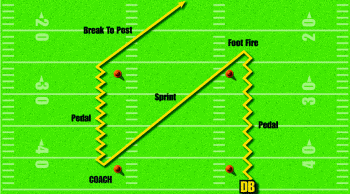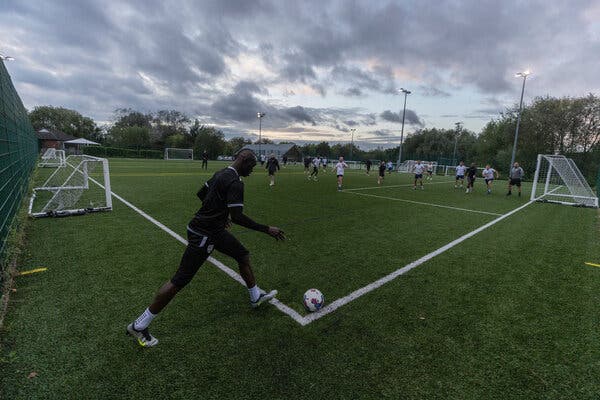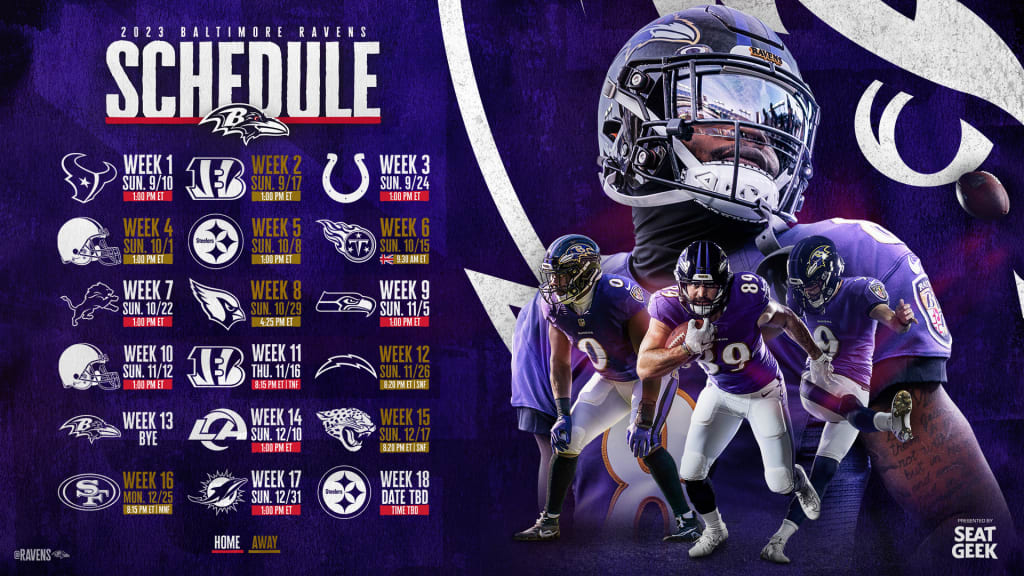As an Amazon Associate, I earn from qualifying purchases.
Footwork is a critical sport skill in American football, affecting performance at every position. Proper footwork enhances agility, speed, and the ability to execute plays effectively.
American football emphasizes the importance of precise footwork for players to gain a competitive edge. Whether it’s a wide receiver running a crisp route, a running back evading tackles, or a defensive back covering an opponent, footwork is the foundation of athletic prowess on the field.
Implementing rigorous footwork drills, such as ladder drills, cone drills, and agility training, players can improve their speed, balance, and overall agility. These exercises are integral in helping athletes at all levels—from junior leagues to the NFL—develop the footwork mechanics necessary to perform at their peak. High-level coaching often includes footwork analysis to tailor training programs that address individual needs and optimize performance. By dedicating time to footwork practice, players can refine their technique, ensuring that their movements are quick, efficient, and contribute to the team’s success.

Credit: www.dickssportinggoods.com
The Importance Of Footwork In American Football
Footwork, often overlooked, is a critical skill in American Football. A player’s foot agility can mean the difference between a game-winning play and a missed opportunity. From elusive running backs to nimble linemen, mastering footwork offers a decisive edge on the field.
Improving Agility And Speed
Agility and speed serve as the backbone of effective football performance. Players with superior footwork can avoid tackles, make sharp cuts, and outmaneuver opponents.
- Drills like the ladder drill improve quick feet.
- Practicing sprints boosts acceleration.
- Zig-zag runs enhance change-of-direction speed.
Improving Balance And Control
Balance and control are pivotal for football players. Solid footwork ensures players stay upright and maintain momentum during plays.
- Balancing exercises strengthen core stability.
- Cone drills develop spatial awareness.
- Single-leg routines support full-body coordination.
Increasing Efficiency On The Field
Efficient footwork translates to better positioning and less energy waste. Players can move with purpose and conserve strength for crucial moments.
Targeted training optimizes players’ steps on the field:
| Exercise | Benefit |
|---|---|
| Footwork drills | Reduce unnecessary movements. |
| Endurance workouts | Maintain footwork quality throughout the game. |
| Technique correction | Streamline movements for optimal performance. |
Common Footwork Techniques In American Football
American Football demands dynamic footwork for high performance. Great footwork means better agility, balance, and reaction skills. Players work on footwork to dodge opponents and control the ball. Let’s dig into the common techniques that keep top NFL stars light on their feet.
The Shuffle Step
The shuffle step is crucial for defensive players. It lets them stay square to the action, quickly reacting to any changes. Here’s the breakdown:
- Stand with feet shoulder-width apart.
- Bend your knees slightly.
- Move sideward without crossing legs.
- Stay on the balls of your feet.
The Crossover Step
Ideal for quick change of direction, the crossover step is key for runners. It involves:
- Crossing one foot over the other.
- Maintaining balance and form.
- Pushing off the back foot for acceleration.
The Power Step
The power step gives burst speed and power. It’s about:
- Explosive push-off with both feet.
- Drive forward or toward the target.
- Short, choppy steps quickly transition to full sprints.
The Sprinter Stance
This technique lays the foundation for a strong sprint. It’s modeled on track athletes and includes:
| Step | Action |
|---|---|
| 1 | One foot forward, aligning knee over toes. |
| 2 | Back foot on toe, ready to push off. |
| 3 | Body leans forward, eyes on target. |
Each of these footwork techniques can make or break a play. Coaches spend hours drilling their athletes to perfect these movements. Practice makes permanent, and for players looking to leave their mark on the gridiron, mastering these steps is a game-changer.
“` This code snippet provides a portion of a blog post formatted in HTML, discussing the importance of various footwork techniques in American Football. It is structured with clear headings and concise, bolded descriptions suitable for readers of various ages. The Shuffle Step, Crossover Step, Power Step, and Sprinter Stance are each presented with a combination of lists and a table to help visualize the movement steps involved.Drills To Improve Footwork In American Football
Footwork is crucial in American Football. Quick feet can mean the difference between an average player and a great one. Players at every position benefit from improved agility and mobility. Below are effective drills to enhance footwork skills.
Ladder Drills
Ladder drills are a classic component of footwork training. They improve speed and coordination. Players should focus on different patterns such as:
- Single Step: Each foot goes into each box at a time.
- Two-Step: Two footfalls in each box, quickly moving forward.
- In-Out: Sideways movement where feet go in then out of the ladder.
Cone Drills
Cone drills help players learn to change direction swiftly. These drills include:
- Serpentine Drill: Weave in and out of cones set in a straight line.
- Box Drill: Sprint, shuffle, and backpedal around cones set in a square pattern.
Reaction Drills
Reaction time separates great athletes. Drills like the Mirror Drill, where one player tries to mimic another’s movement, boost anticipation and response time.
Jump Rope Drills
Jump ropes are not just for boxers. They’re a simple tool that can vastly improve footwork on the field. Players can perform:
- Single jumps – for speed
- Double unders – for explosive power
- One-leg jumps – for balance

Credit: blogs.usafootball.com
The Role Of Footwork In Specific Positions In American Football
Footwork is crucial for every position in American Football. It can mean the difference between a game-winning play and a missed opportunity. Players at all levels spend countless hours perfecting their steps to enhance performance on the field. Here’s how footwork plays a key role in several specific positions:
Quarterback FootworkQuarterback Footwork
For quarterbacks, footwork means precision. Good footwork allows for quick drops, evading defenders, and setting a sturdy platform to throw. A quarterback’s footwork is linked to their accuracy and throwing power.
Running Back FootworkRunning Back Footwork
Running backs need agile and explosive footwork to navigate through tiny gaps. Their steps determine their ability to change direction swiftly without losing speed. Maintaining balance and a low center of gravity is key.
Wide Receiver FootworkWide Receiver Footwork
For wide receivers, footwork is about route running and evasion. Crisp routes require precision in each step. Proper footwork helps to create separation from defenders, allowing for successful catches.
Defensive Back FootworkDefensive Back Footwork
Defensive backs must have quick, reactive footwork. Their job is to mirror the receiver, so anticipating movements and changing direction quickly is essential. Balance and footwork drills are at the core of their training.
Lineman FootworkLineman Footwork
Linemen rely on strong, balanced footwork to protect or break through the line. Their battles are won or lost on leverage, which starts with foot placement. Proper footwork allows them to maintain power and control.
Common Footwork Mistakes To Avoid In American Football
American football demands precision in every step. Players must master their footwork to dodge opponents and sprint towards the end zone. Yet, common footwork mistakes can trip up even the most talented athletes. This guide highlights crucial errors to sidestep for those aspiring to gridiron greatness.
Crossing Feet or OverstridingCrossing Feet Or Overstriding
When players cross their feet, they compromise their agility. Overstriding, on the other hand, can lead to slow movement changes. To maintain quick reflexes, players should keep feet shoulder-width apart. Key points:
- Avoid crossing feet during lateral movements.
- Shortening strides can prevent overstriding.
Not Maintaining Proper Balance
Balance is the foundation of all football movements. Players often lean too far forward or backward, hurting their stability. A low center of gravity helps keep balance in check. Balance improvement tips:
- Practice drills with a focus on balance.
- Engage in exercises that strengthen the core.
Lack Of Explosiveness Off The Step
Explosiveness off the step is key to beating opponents. A common mistake is starting steps with a lack of power. For explosive strength, practice plyometrics and quick ground contact. Exercises to become explosive:
- Plyometric jumps for power generation.
- Sprints for fast-twitch muscle development.

Credit: www.americanfootballmonthly.com
The Mind-body Connection In American Football Footwork
Mastering the art of footwork is key to excellence in American Football. Exceptional footwork enhances balance, agility, and speed. However, it’s not just about physical prowess. There is a deep connection between the mind and body that players must harness to maximize their potential on the field. Let’s explore how mental strategies complement physical training to improve footwork in football.
Visualizing Proper Technique
Picture the perfect play. Visualization helps players see themselves executing flawless footwork. It builds a mental blueprint, creating a guide for their bodies to follow during the game. Implementing visualization can lead to polished and precise movements, as the mind has already rehearsed the scenarios.
Pre-game Mental Preparation
Before the whistle blows, mental preparation sets the stage for success. Players engage in routines to calm their minds and focus on the task at hand. Such preparation includes deep breathing exercises, listening to motivating music, or repeating affirmations. A clear, focused mind allows players to execute intricate footwork with confidence.
Creating Muscle Memory Through Repetition
Practice leads to perfection. Repetition is the cornerstone of developing muscle memory for complex footwork patterns. Athletes spend countless hours drilling movements like cuts, backpedals, and lateral steps. Over time, these moves become automatic responses during play, allowing for swift, adaptive, and intelligent reactions to the dynamic nature of football.
The Future Of Footwork Training In American Football
Footwork is vital in American Football, the bedrock for explosive plays and quick turns. With advancements in technology, the future of footwork training is transforming. Players and coaches now focus on precision, speed, and efficiency through modern techniques.
Technology And Data-driven Training
The days of guesswork in training are fading. Now, wearable sensors capture every nuance of a player’s movements. Coaches have access to real-time data, helping to craft custom footwork programs.
- GPS trackers monitor speed and distance
- Force-sensitive insoles assess balance and force distribution
- AI software predicts performance improvements
New And Innovative Footwork Drills
Creative drills are reshaping how players train their feet.
| Drill | Benefits |
|---|---|
| Mirror Facing | Enhances reaction time and agility |
| Shadow Sprints | Builds acceleration and deceleration skills |
| Blindfolded Zigzag | Sharpens spatial awareness |
Virtual Reality Training
Virtual Reality (VR) brings a new dimension to footwork training. Players can simulate game situations without the physical wear.
- Immersive environments mimic real games
- Replay crucial plays to perfect movements
- Safe practice for recovering athletes
Technologies like VR ensure consistent practice and rapid skill acquisition.
Frequently Asked Questions Of American Football,footwork,sport Skill
How Can I Improve My Footwork In American Football?
Practice ladder drills regularly to boost agility and coordination. Include cone drills to enhance directional changes. Study game footage to understand effective footwork patterns. Work with a coach for personalized technique improvement. Maintain a consistent workout routine for strength and balance.
Why Is Footwork Important In Football?
Footwork is crucial in football for maintaining balance, changing direction swiftly, and enhancing overall agility on the field.
What Are The Different Types Of Footwork In Football?
Different types of footwork in football include high knees, lateral shuffles, crossover steps, backpedaling, and sprinting variations.
How Can I Improve My Football Footwork?
Improve football footwork by practicing ladder drills, cone drills, and plyometrics. Focus on quick, precise movements and repeat frequently to enhance agility.
Conclusion
Mastering footwork is vital for athletic prowess in American football. This skill enhances agility, speed, and performance on the field. Athletes and coaches alike should focus on footwork drills for optimal results. Remember, proper technique leads to game-changing plays. Keep training, stay consistent, and watch your footwork transform your game.
Amazon and the Amazon logo are trademarks of Amazon.com, Inc, or its affiliates.

